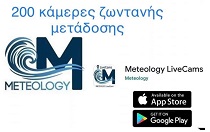World Weather
Cloud and outbreaks of rain will spread across most parts early next week, followed by a mixture of sunshine and showers. The remainder of the week will remain unsettled and often windy with bands of rain pushing east, these interspersed with brighter, though showery conditions.

The heaviest rain and most frequent showers will be in the north and west and the best of any drier spells in the east and southeast.Into the weekend and following week it will remain generally unsettled with the most frequent spells of rain across northwestern parts and generally drier and brighter weather in the southeast.
Temperatures will be generally around normal, with the warmest temperatures likely in the south. The most unsettled weather is likely across the northern half of the country into July, with showers or longer spells of rain at times though there should also be some drier and brighter interludes.
Southern and southeastern parts should see the best of any drier, warmer and sunnier weather though still perhaps some rain or showers at times. Temperatures should be around normal for the time of year, though perhaps a little above at times in the south.
In fulfilling its public task the Met Office has a broad remit to act in the public’s best interest, and the requirement to protect life and property is at the centre of what we do.
The Public Weather Service provides a coherent range of basic weather information and weather-related warnings that enable the UK public to make informed decisions in their day-to-day activities. Such information is ‘free at the point of use’.
There are a variety of end uses to weather forecasts. Weather warnings are important forecasts because they are used to protect life and property. Forecasts based ontemperature and precipitation are important to agriculture, and therefore to traders within commodity markets.
Temperature forecasts are used by utility companies to estimate demand over coming days. On an everyday basis, people use weather forecasts to determine what to wear on a given day.
Since outdoor activities are severely curtailed by heavy rain, snow and wind chill, forecasts can be used to plan activities around these events, and to plan ahead and survive them. In 2014, the US spent $5.1 billion on weather forecasting

Δημοφιλή Άρθρα
- Αυτά είναι τα 5 ενεργά ηφαίστεια της Ελλάδας (140320)
- Ιστορικό κύμα ψύχους στην Ευρώπη- τι αναμένεται στην χώρα μας (101055)
- ΕΜΦΑΝΙΣΤΗΚΕ ΦΥΣΗΤΗΡΑΣ ΣΤΗ ΧΑΛΚΙΔΙΚΗ-ΒΙΝΤΕΟ (55758)
- Λευκά Χριστούγεννα? Ποιες περιοχές θα δούνε χιόνια (41160)
- Τα παράξενα του 2021 συνεχίζονται: Λίμνη εμφανίζεται σε ένα… βράδυ σε χωράφι (32796)
Αναζήτηση
Πρόσφατα Άρθρα
Κατηγορίες
Ετικέτες
To find out more, including how to control cookies, see here: Cookie Policy


